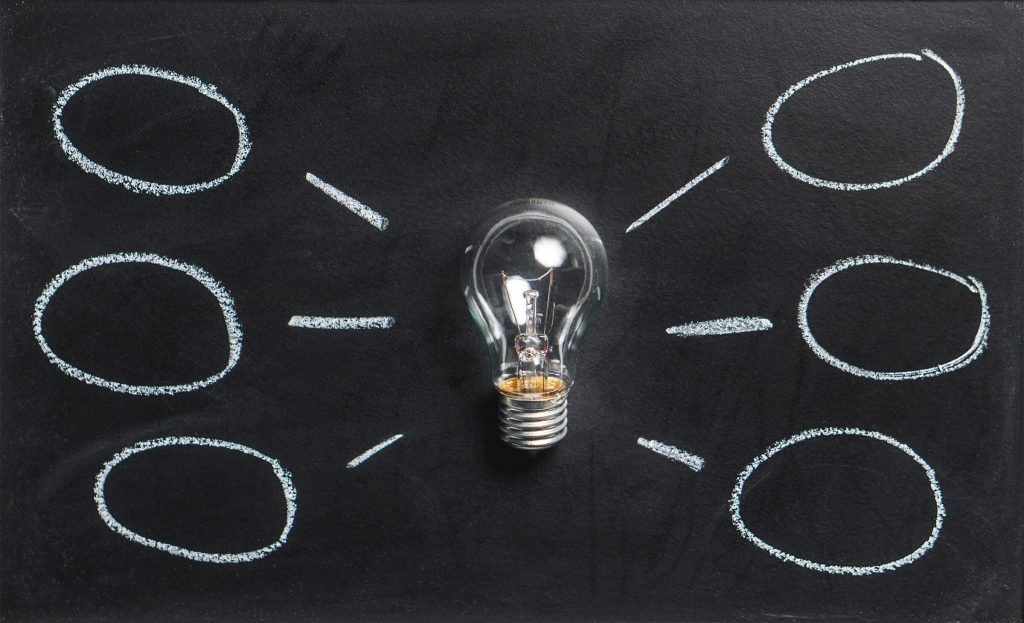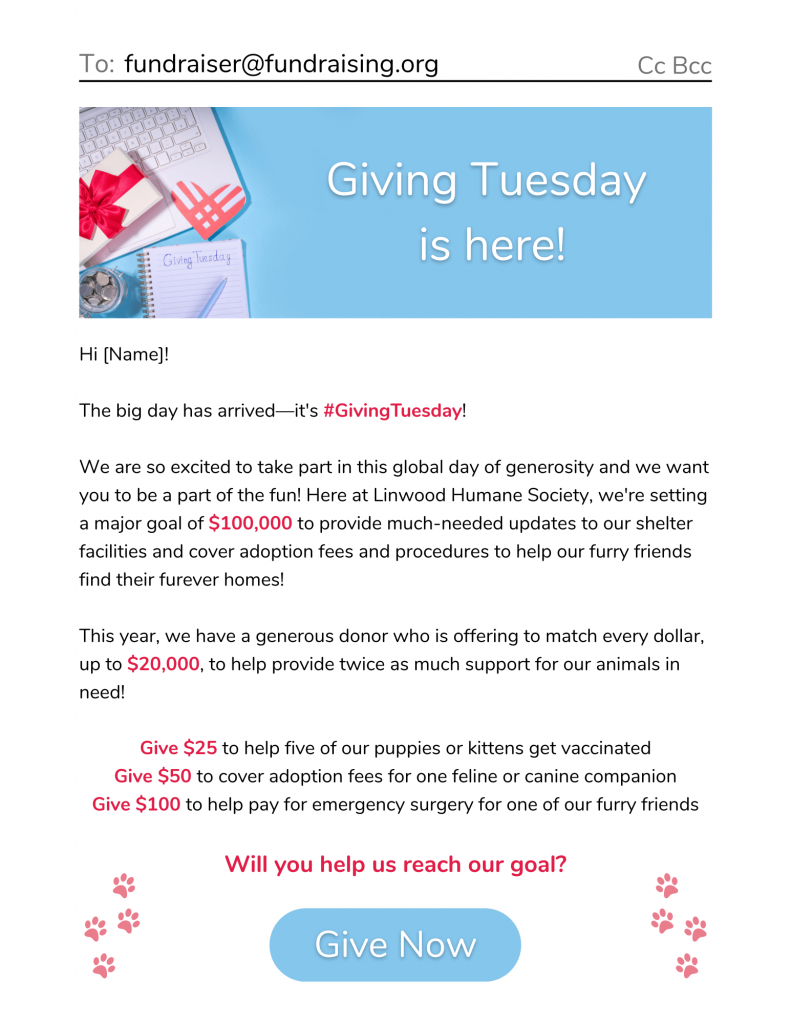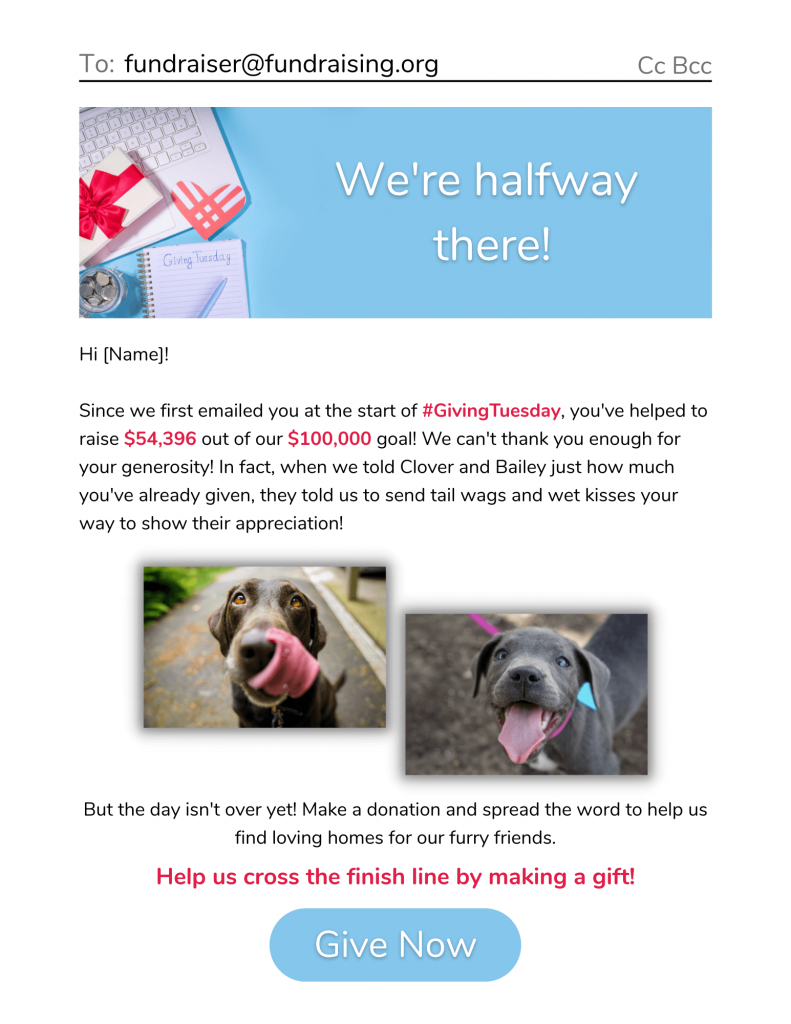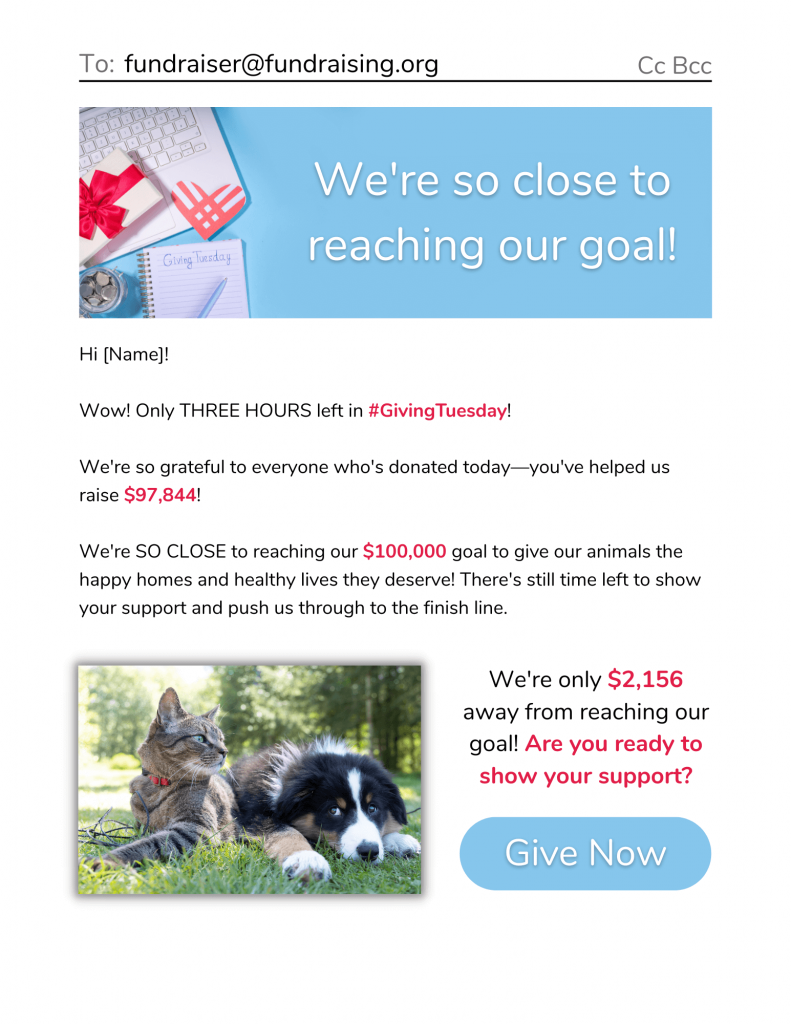It’s no secret that email is one of the most effective ways to communicate with donors and fundraise. Email has the highest return on investment of any marketing channel ($40 for every dollar spent!), making it a no-brainer to include in your marketing strategy for Giving Tuesday! But before you start sending out email blasts to all your donors, it’s well worth it to take time to fine tune your email fundraising strategies to get the most out of your Giving Tuesday communications.
Email Fundraising Campaign Strategies for Giving Tuesday

Check your email analytics
Before you start planning your Giving Tuesday email campaign, take a look at your email analytics. Check out past emails you’ve sent your donors and look at emails with high open and click-through rates. If you have access to a heatmaps tool, check out what parts of your emails attracted the most attention from your donors. Take note of what your most effective CTAs have in common. Once you’ve compiled this information, you can use it to create more attention-grabbing emails for your Giving Tuesday email campaign.
Segment your donors
There’s nothing worse for an email fundraising campaign than sending irrelevant information to the wrong donors or making them read through generic, impersonal copy. Not only does this deter donors from making a donation to your organization, but it could also negatively impact your donor retention rates.
To encourage donations and connect with your base, try segmenting your donors. Organize your donors into different groups based on commonalities like age, giving history, geographic location, and other factors. Once you have your donor segments, you can send more personalized emails and appeals to your donors, increasing the likelihood that they’ll respond positively and give more!
Focus on storytelling
The best way to grab and keep your donors’ attention is by focusing on storytelling in your emails. When you begin writing copy, your first consideration should be your emails’ subject lines. It’s the first thing your donors will see when they open up their inboxes, and without a compelling subject line, they might skip over your email without opening it. To get your donors interested in what you have to say, write an attention-grabbing subject line!
Once donors open your email, your next job is to convince them to make a donation. One of the most effective ways to motivate your donors to give is by highlighting impact. If you can tell your donors how their gift will make a difference and what their donations will go towards, they’ll be more likely to give. To better engage donors and showcase your organization’s mission, add photos and videos to your emails for a bit of visual storytelling.
Pick a compelling call-to-action
Your Giving Tuesday emails should always include a clear call-to-action that your donors can follow. In each email you send, keep things simple. Only include one or two major CTAs to avoid overwhelming your email recipients and make sure you use a short, simple phrase to motivate your donors to take action. Find a way to make your CTAs stand out from the rest of your email content to draw your donors’ attention and make them more likely to click.
Determine your email campaign schedule
To get the most out of your Giving Tuesday email campaign, decide on a send schedule ahead of time. You don’t want to inundate your donors with too many donation requests or updates. By overwhelming your donors with Giving Tuesday emails, you may find that your donors are less likely to give to your organization.
Plan to send out a few emails in the weeks leading up to Giving Tuesday to raise awareness for your campaign and get it on your donors’ radar. Then, on the day of, make sure to send your donors emails throughout the day–one to kick off the giving day, one or two emails as updates on your fundraising progress throughout the day, and a final call email to give your donors one last opportunity to donate on Giving Tuesday.
Kick-off email example

Update email example

Last call email example

Thank your donors
After your donors make a gift, it’s important to thank them for their support! Send them a thoughtful thank-you email after they’ve completed their donation to show your appreciation. To turn one-time donors into long-term supporters, make sure to share the impact your donors had on your organization with their gift. Provide them with updates on how their donation will be used and continue to follow-up occasionally to share the continuing impact of their gift. When donors learn about how their contribution to your organization is making a positive difference in the world, they’ll be more likely to donate a second or third time.
Final thoughts
By focusing on these email fundraising strategies, you can execute a successful Giving Tuesday email campaign that will help you connect with your donors and raise even more this Giving Tuesday.









